Blind hem by hand is a perfect stitch cause it stays hidden and also keeps the fabric together. But when I 1st started doing this stitch, I was confused about which thread to use. Cause every thread is strong enough to hold the fabric edge.
Without banging my head alone, I asked Grandma which was the best blind stitch thread. She took out her thread box and said,
Thread
Silk or fine polyester thread works best for blind stitches due to its smooth finish and nearly invisible look.
I asked, ‘why it is suitable for blind stitch? Why not other thread?’
That’s a lot of talk. So, let’s sit down and explain to you why that thread is best for hand stitch patterns.
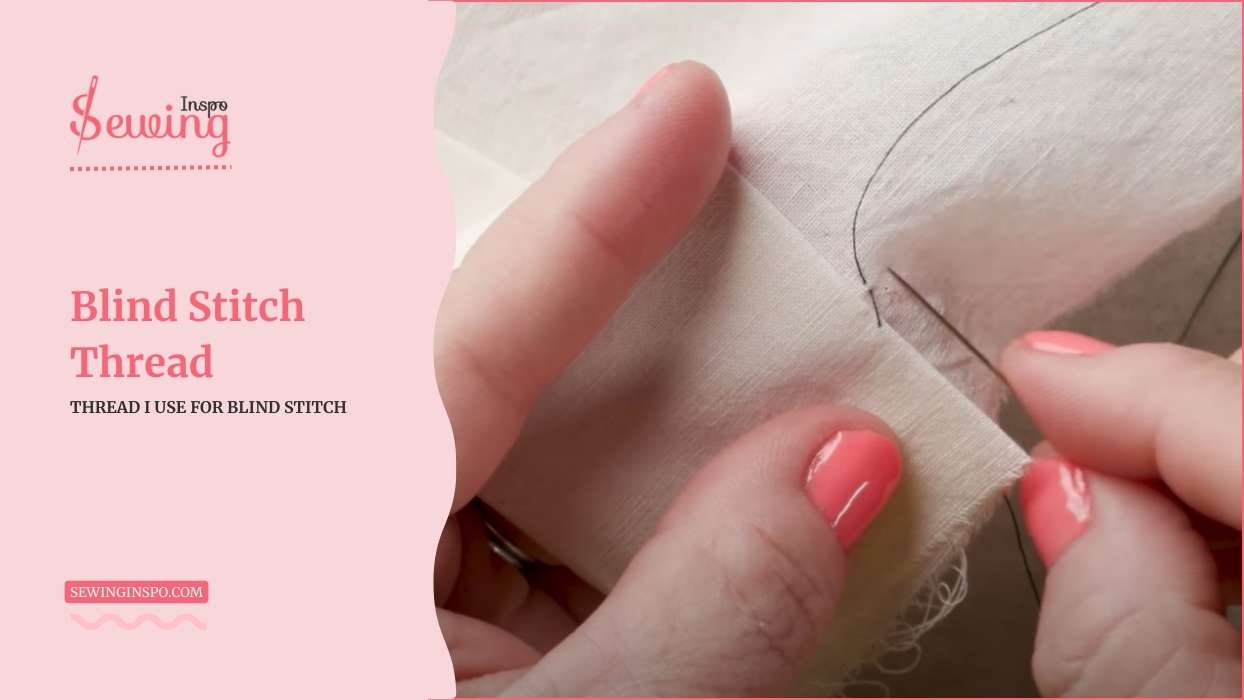
Table of Contents
Which Was The Best Blind Stitch Thread?
Slik and polyester thread is best for blind stitching. However, the choice of thread varies depending on your handcraft project. For example,
For delicate fabrics like silk or lightweight cotton, silk thread is my absolute favorite. It glides through like butter and melts into the fabric, making the stitch practically invisible.
Now, if you’re working with medium-weight fabrics,
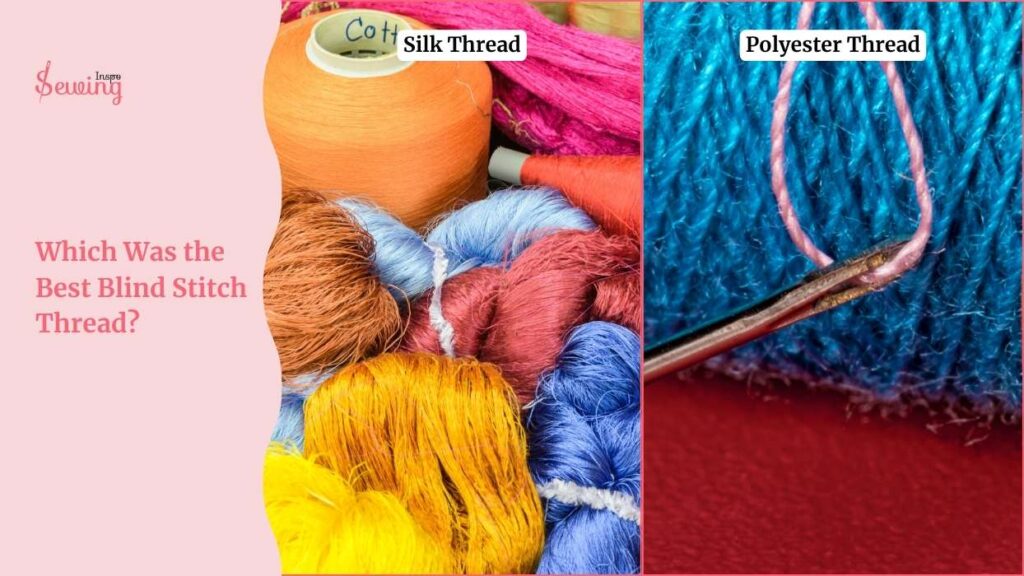
like wool or linen, then cotton-wrapped polyester thread is a good choice. It’s got the softness of cotton but the strength of polyester.
So, your stitches in sewing hold up beautifully over time.
For heavier fabrics like denim or upholstery, nylon or polyester thread is the way to go. It’s strong, flexible, and won’t snap when you pull it tight. This thread is even perfect for double-blind stitches, too.
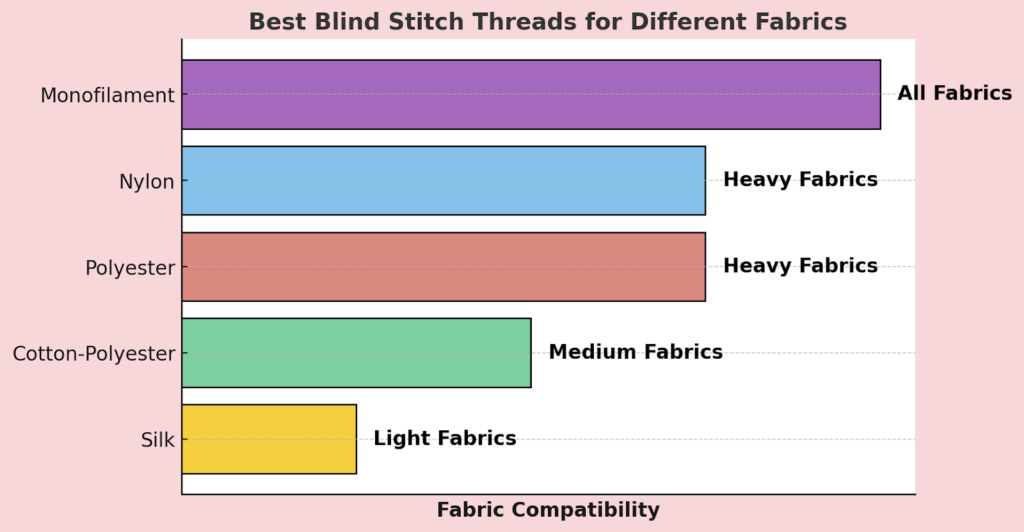
And if you want to make life easy, dear, try a monofilament (clear) thread. It blends into any fabric, no matter the color! Just be gentle with it, or it’ll tangle like a bird’s nest.
So, pick the thread that suits your fabric.
‘Ok, but which one is your favorite grandma?’ I asked
She said, ‘Like I said before, slik thread works best in every fabric to do the blind stitch. So, the slik thread is best for blind stitch.’
Why Is Silk Thread Best For Blind Stitch?
Silk thread is my favourite for delicate fabrics because it’s so fine and smooth. It just disappears into the fabric without leaving bumps or stiffness. Plus, it has a little natural stretch.
So, it moves with the fabric instead of pulling too tight. If you’re working on something like silk, chiffon, or even lightweight cotton, silk thread will make your blind stitches practically invisible.
Now you are ready to learn how to start a stitch by hand.
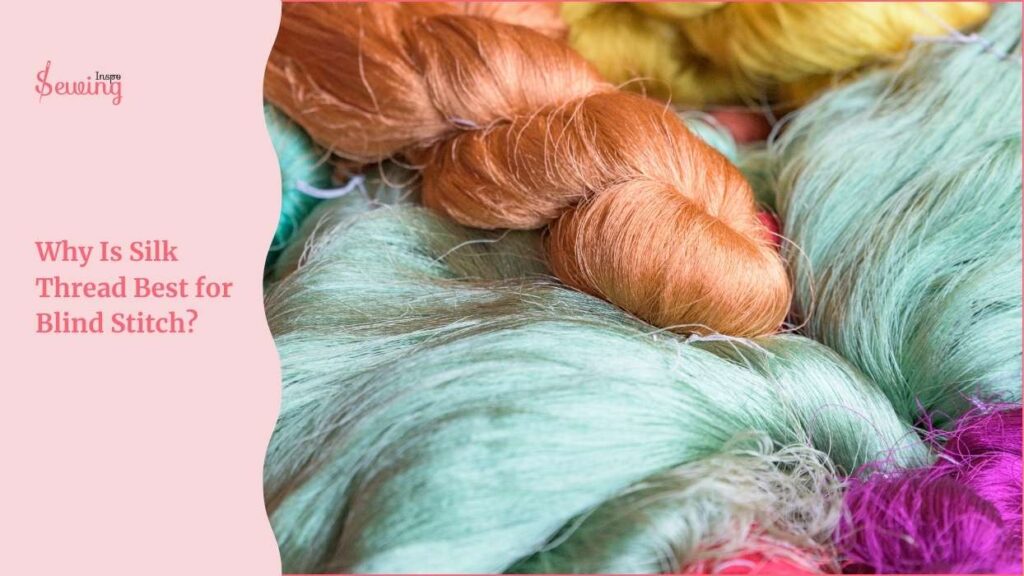
Blind Stitch Thread Size Chart
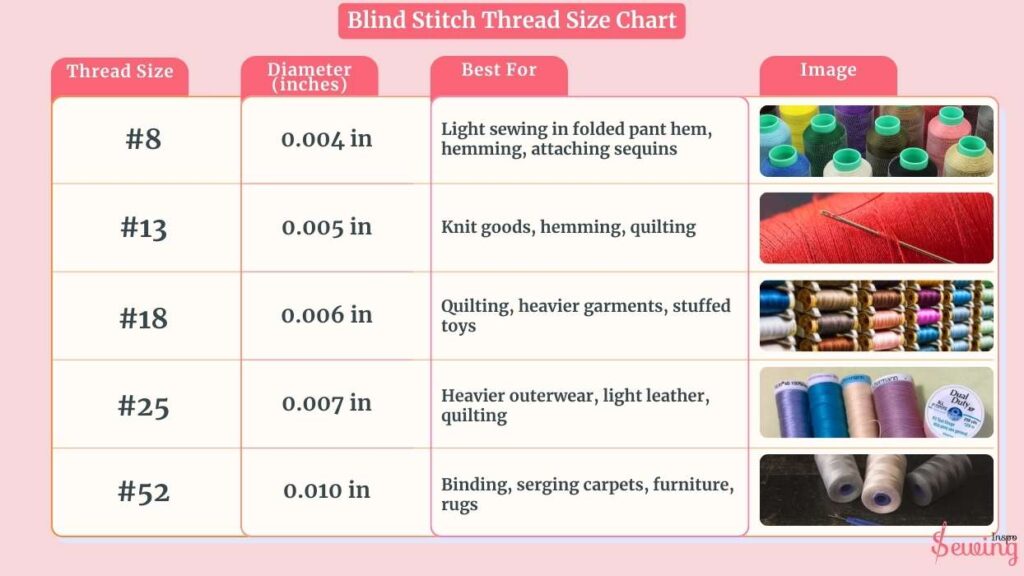
Got your favourite thread? You need to select the right size thread for a perfect blind stitch. And the thread size choice depends on fabric weight. For example,
| Thread Size | Diameter (inches) | Best For |
| #8 | 0.004 in | Light sewing in folded pant hem, hemming, attaching sequins |
| #13 | 0.005 in | Knit goods, hemming, quilting |
| #18 | 0.006 in | Quilting, heavier garments, stuffed toys and even double stitching are also perfect. |
| #25 | 0.007 in | Heavier outerwear, light leather, quilting |
| #52 | 0.010 in | Binding, serging carpets, furniture, rugs |
Now, if you’re working on something dainty, like hemming a dress, stick with #8 or #13. But if you tackle something tough, like upholstery or leather, that #52 will hold strong like a good.
What Is The Best Thread For Blind Stitching?
Gutermann blind hem thread is the best thread for blind stitching.
Although I said polyester thread best, if you want a specific thread name. Then Gutermann blind hem thread & Gral blind hemming thread.
Here is why i love them,
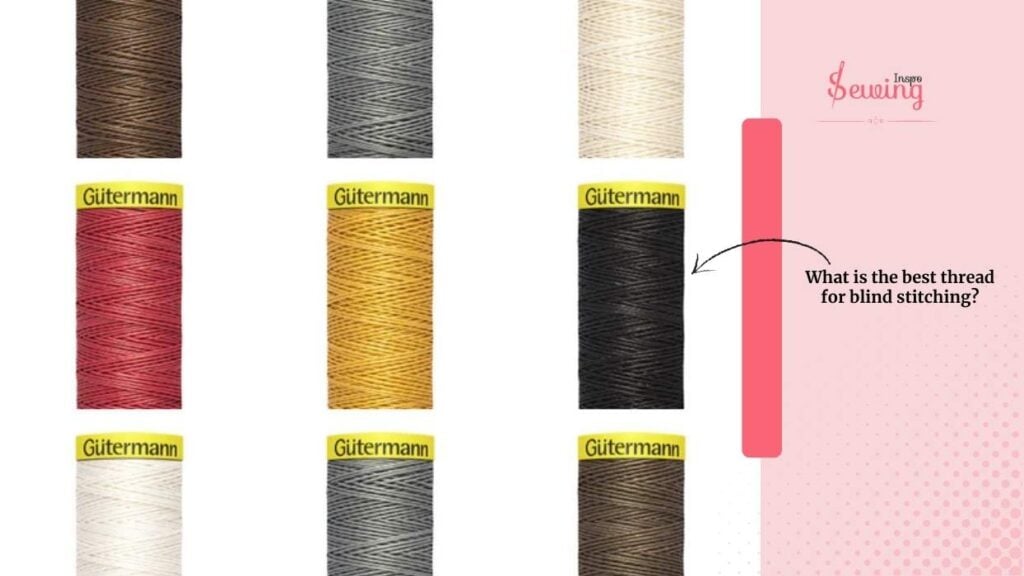
Gral Blind Hemming Thread
The thread glides smoothly through the fabric, and it blends seamlessly into the background, leaving no trace on the front of the fabric.
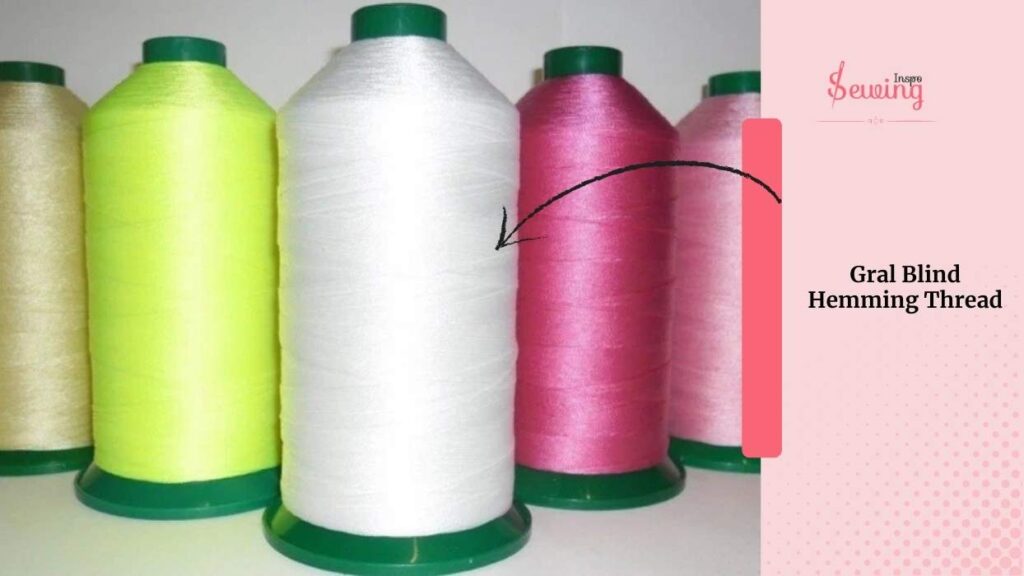
What I love most is how durable it is. Even after multiple washes, the hems hold up well, and the thread stays intact.
It works great with light and heavy fabrics, which is a big plus. Whether I’m hemming jeans, skirts, or draperies, this thread gives a clean finish every time.
Gutermann Blind Hem Thread
The thread is smooth and easy to work with, making it perfect for both beginners and seasoned sewists. I appreciate how well it blends into the fabric, leaving no visible stitching on the front, which is exactly what I wanted for my tailored pants and skirts.
The thread’s strength is impressive, too. It holds up beautifully even after multiple washes without fraying or breaking.
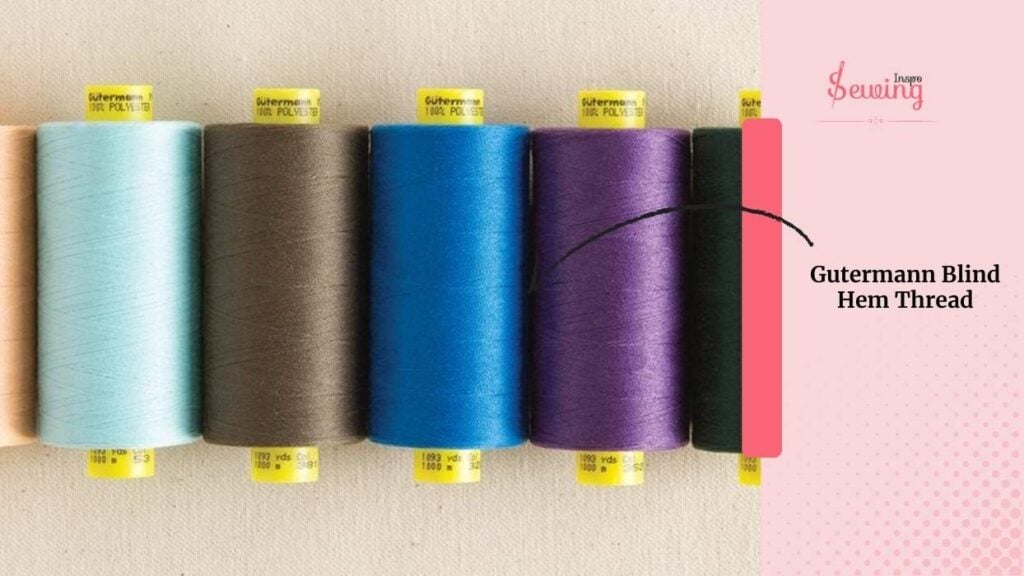
Frequently Asked Questions
Is Cotton Thread Good For Blind Stitching?
Cotton thread can work, but it’s not always the best choice. It’s slightly rougher and may not blend seamlessly like silk or polyester, especially on delicate fabrics. However, fine cotton thread (60-80 wt) does the job well for casual garments and quilting projects.
Why Is Silk Thread Preferred For Blind Stitching?
Silk thread is incredibly fine and smooth, allowing it to disappear into fabric. It also has a slight elasticity, which helps prevent puckering and keeps stitches flexible—perfect for delicate fabrics like silk, satin, or fine wool.
Can I Use Polyester Thread For Blind Stitching?
Yes! Polyester is an excellent choice because it’s durable, smooth, and slightly stretchy, making it ideal for everyday fabrics. It also resists shrinking and breaking.
Ending
I thanked Grandma for telling me about the blind stitch thread and left. After that talk with Grandma I was never confused about which thread I will use for blind stitch again. I hope you won’t be confused too.

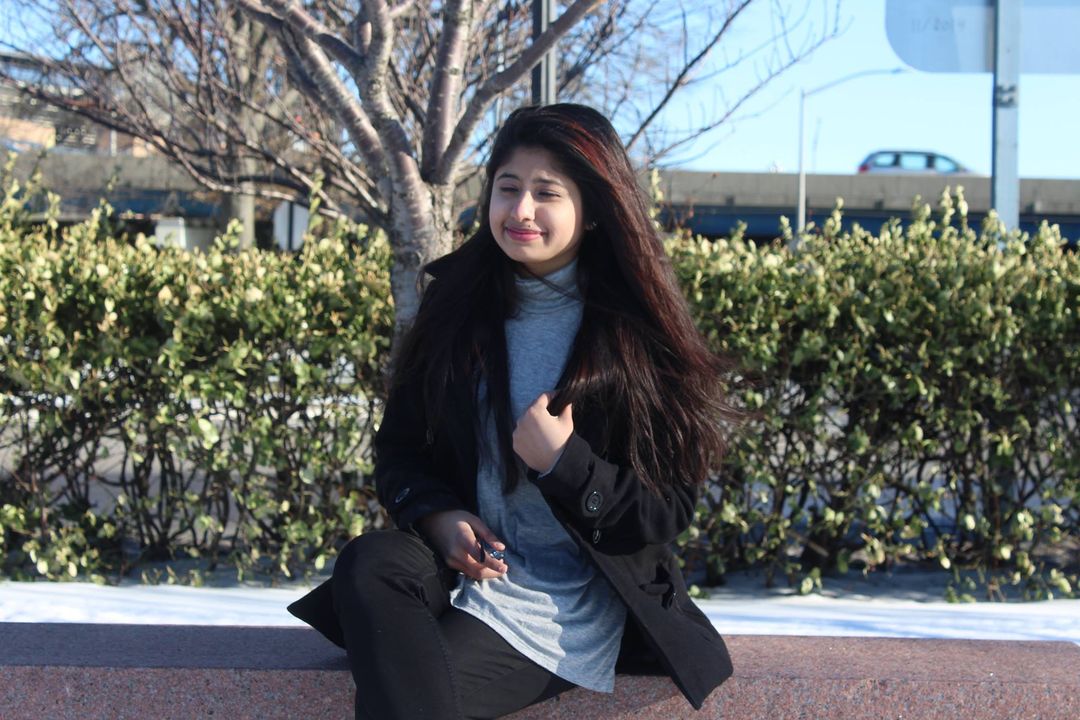
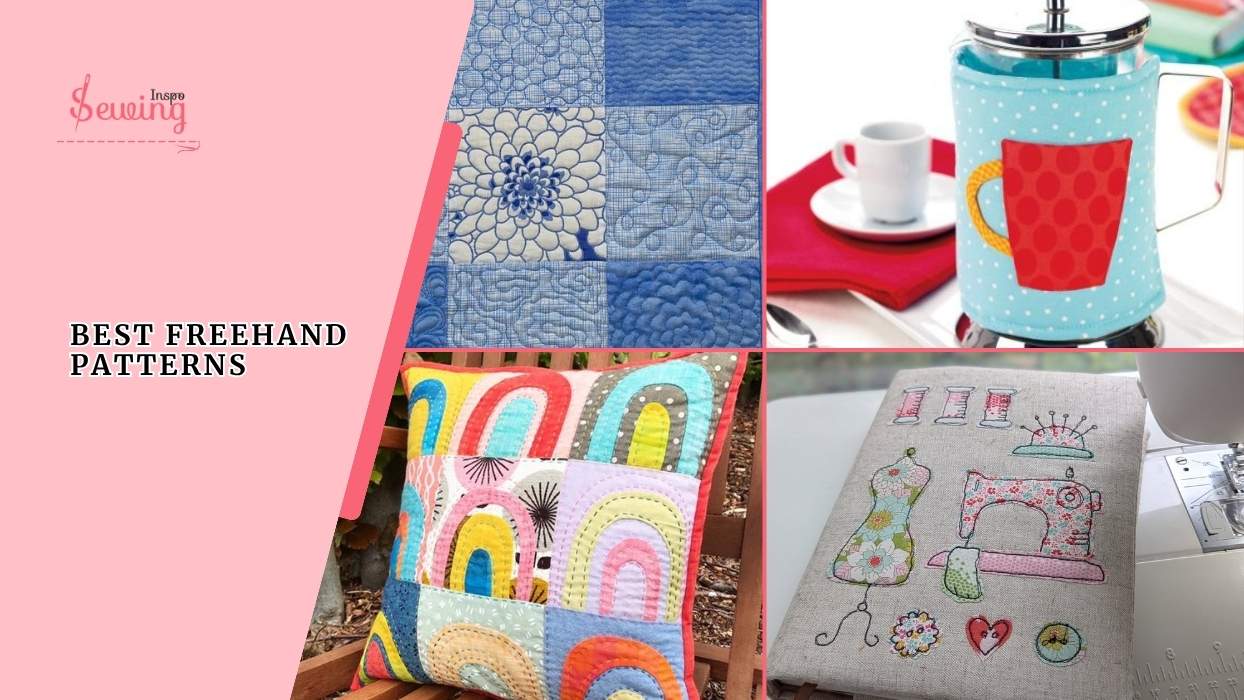
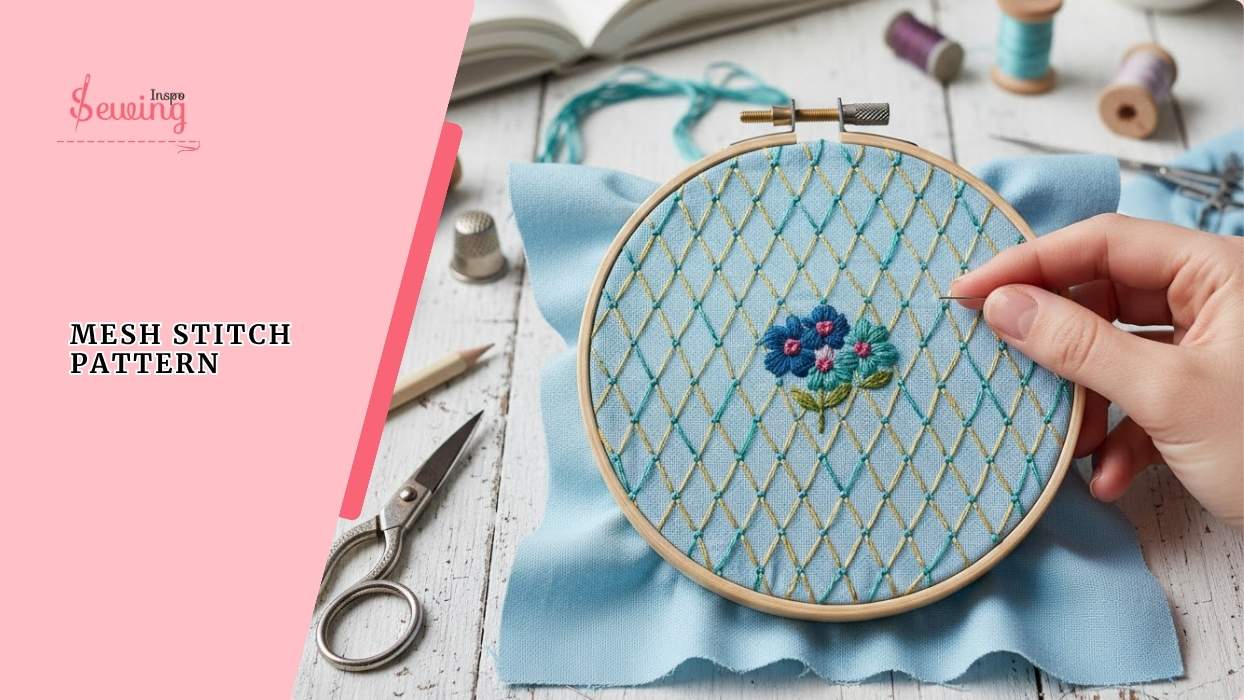
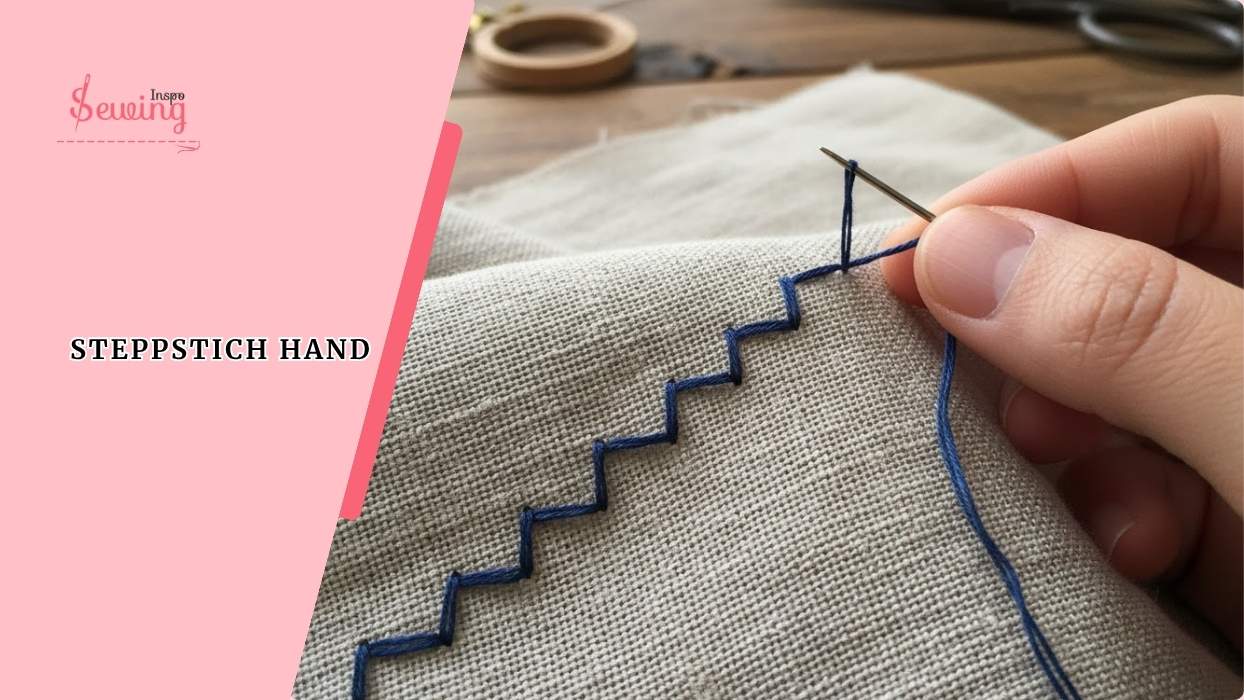
Leave a Reply